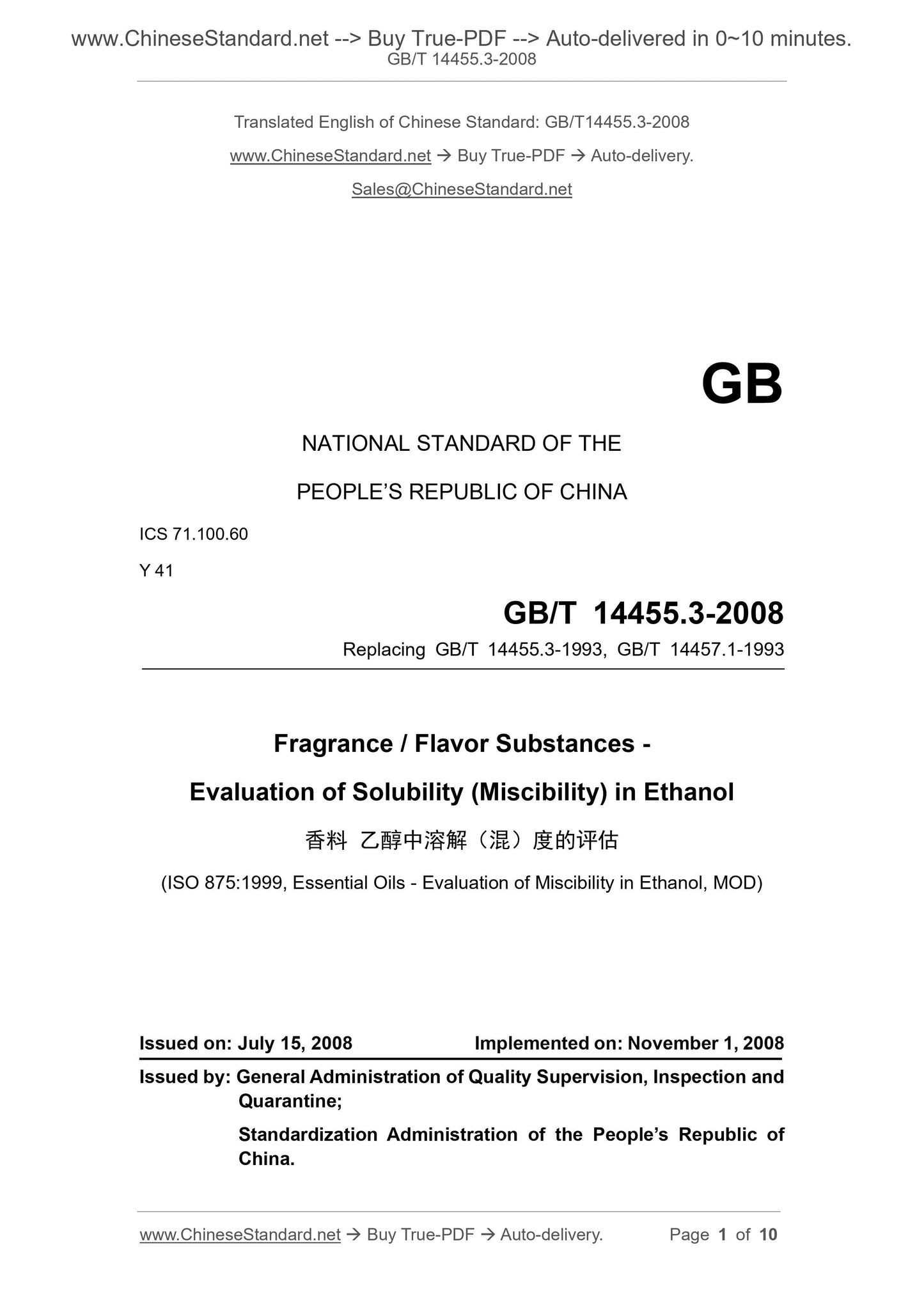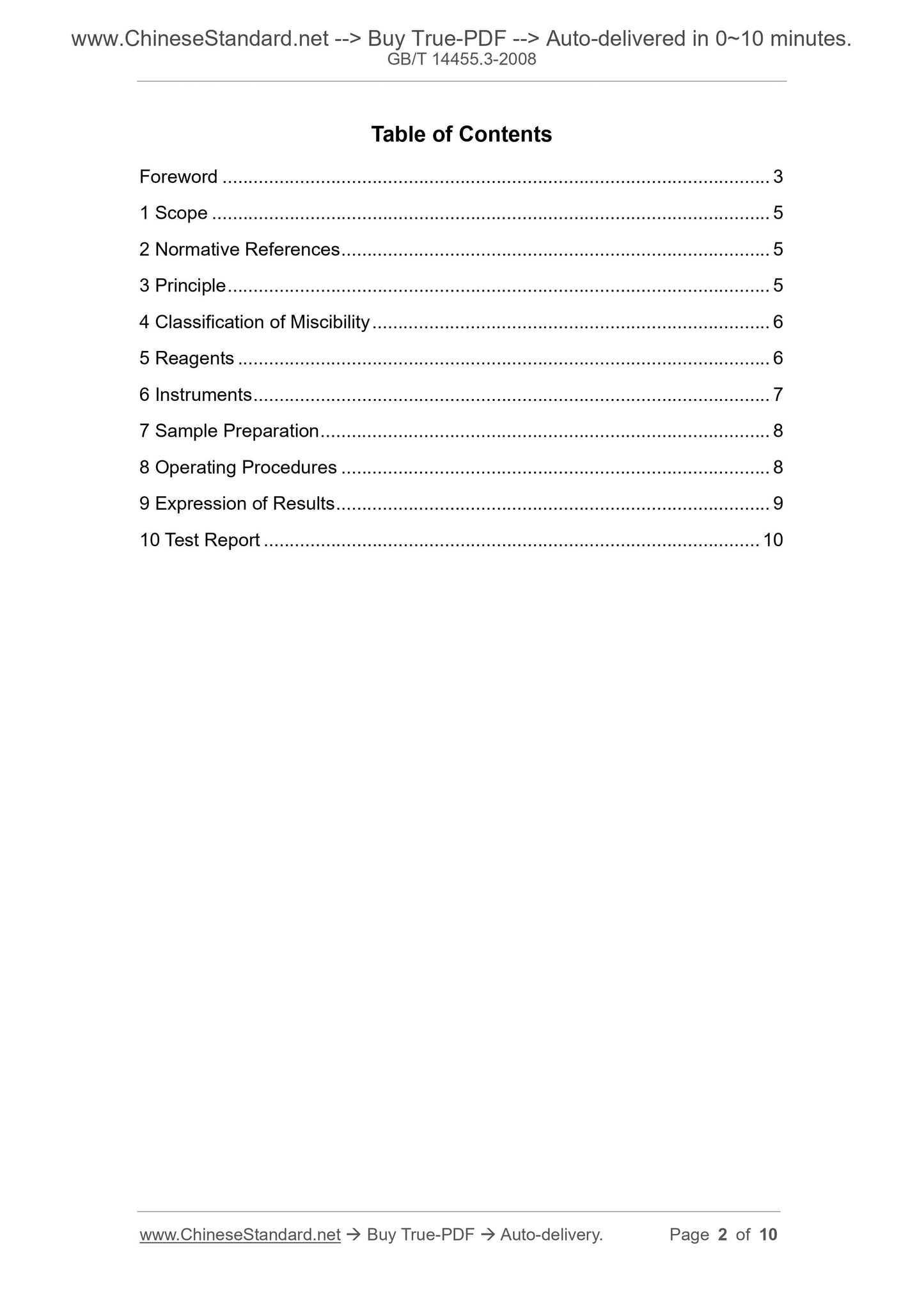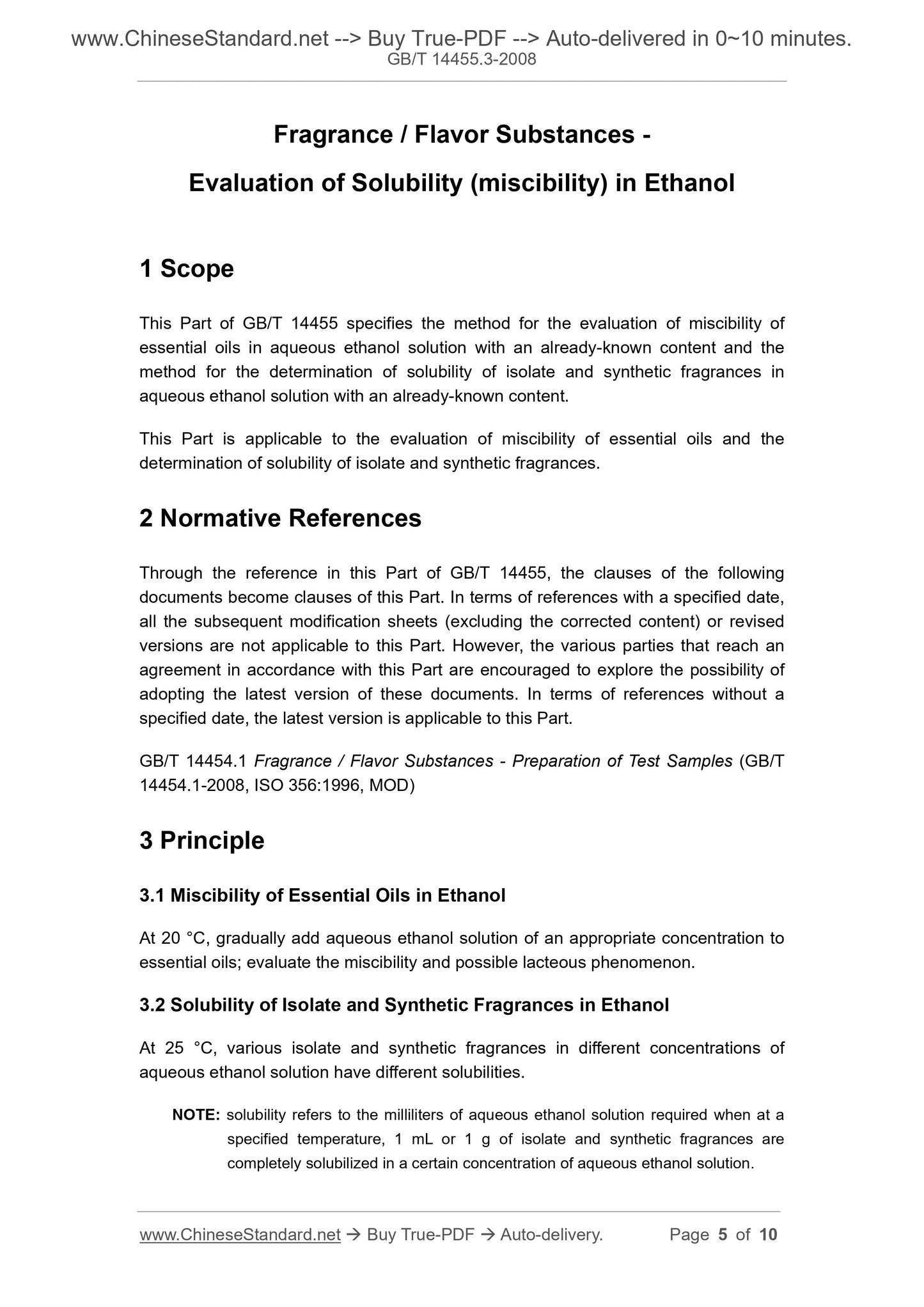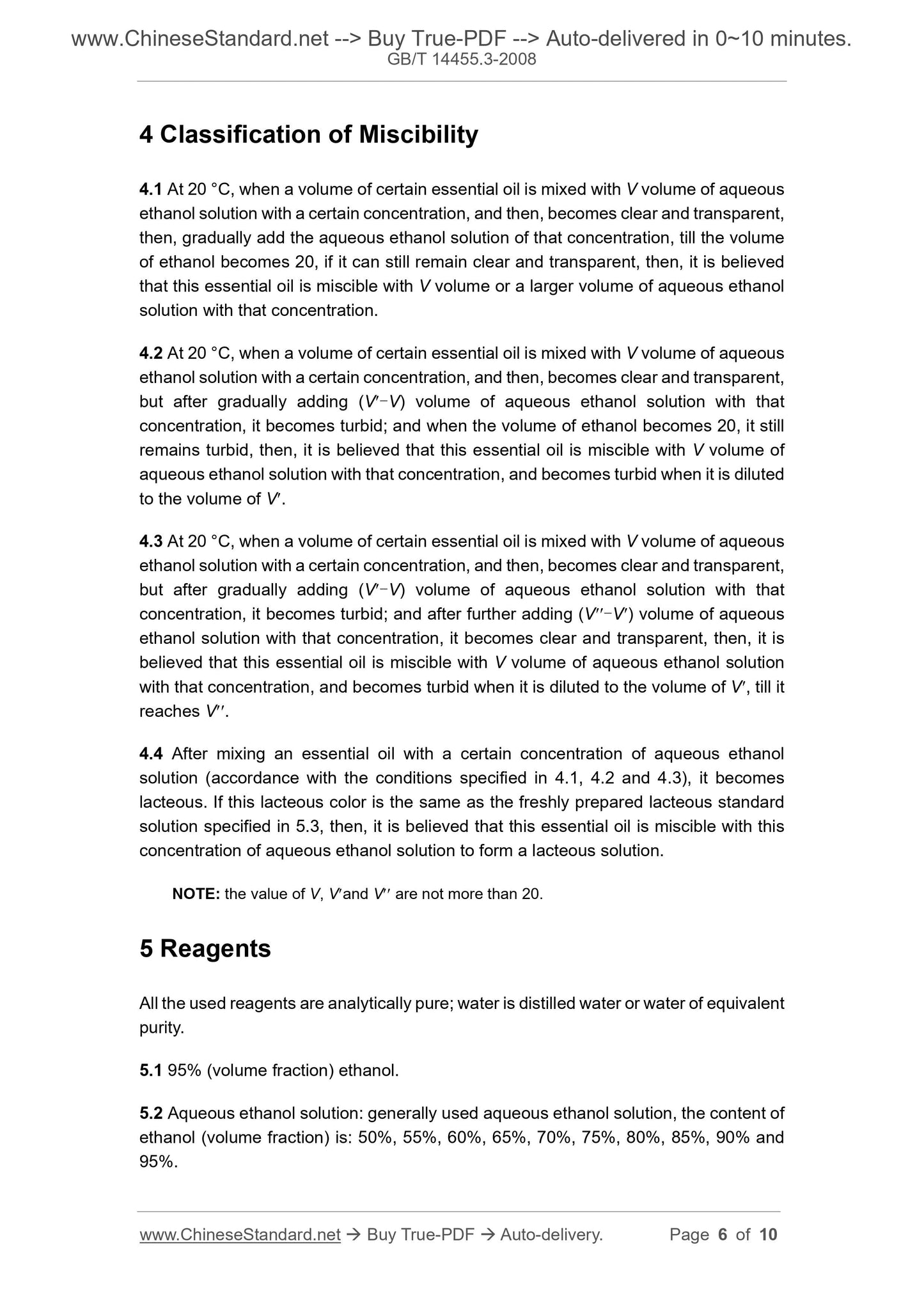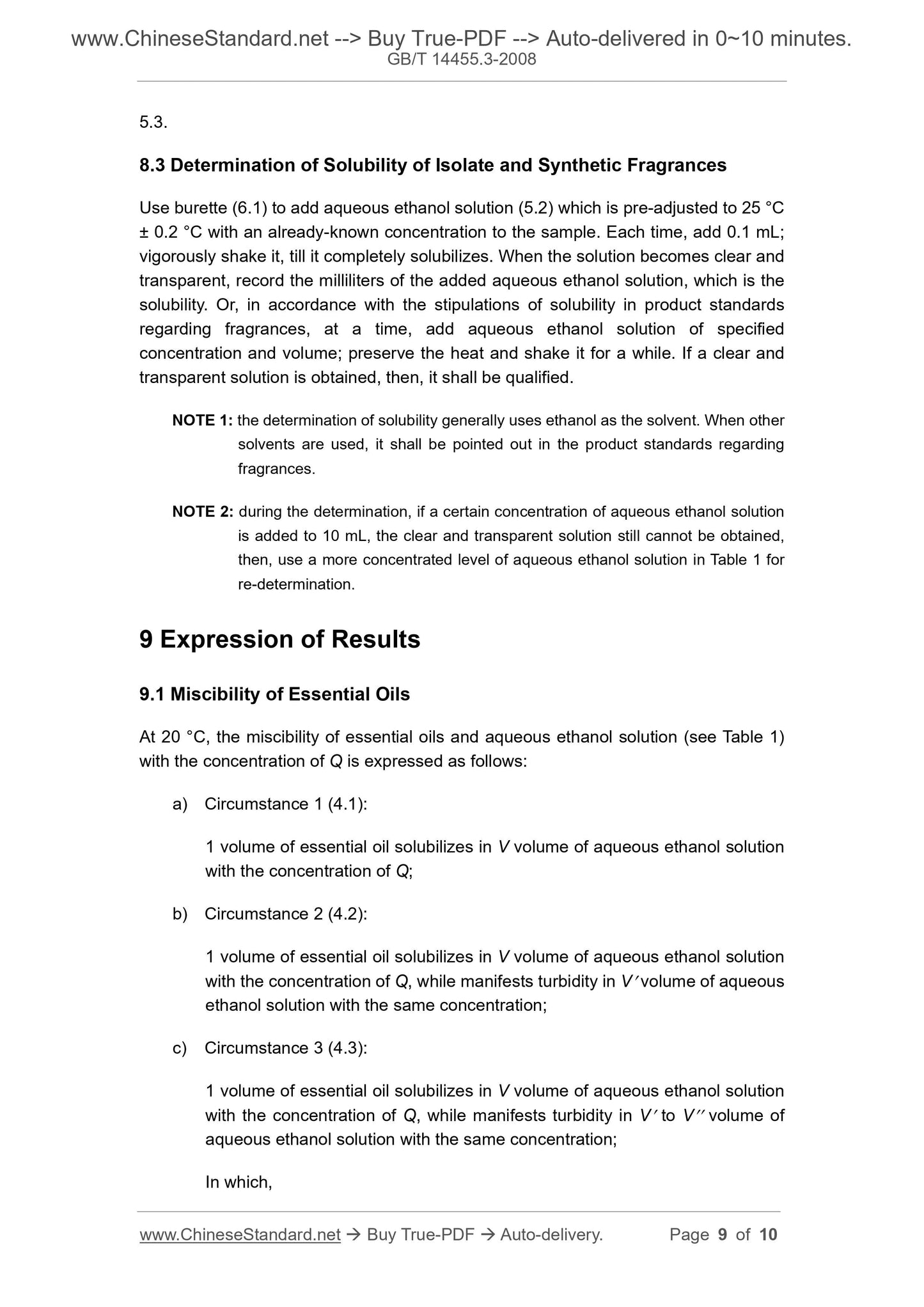1
/
of
5
www.ChineseStandard.us -- Field Test Asia Pte. Ltd.
GB/T 14455.3-2008 English PDF (GB/T14455.3-2008)
GB/T 14455.3-2008 English PDF (GB/T14455.3-2008)
Regular price
$110.00
Regular price
Sale price
$110.00
Unit price
/
per
Shipping calculated at checkout.
Couldn't load pickup availability
GB/T 14455.3-2008: Fragrance/Flavor substances -- Evaluation of solubility (miscibility) in ethanol
Delivery: 9 seconds. Download (and Email) true-PDF + Invoice.Get Quotation: Click GB/T 14455.3-2008 (Self-service in 1-minute)
Newer / historical versions: GB/T 14455.3-2008
Preview True-PDF
Scope
This Part of GB/T 14455 specifies the method for the evaluation of miscibility ofessential oils in aqueous ethanol solution with an already-known content and the
method for the determination of solubility of isolate and synthetic fragrances in
aqueous ethanol solution with an already-known content.
This Part is applicable to the evaluation of miscibility of essential oils and the
determination of solubility of isolate and synthetic fragrances.
Basic Data
| Standard ID | GB/T 14455.3-2008 (GB/T14455.3-2008) |
| Description (Translated English) | Fragrance/Flavor substances -- Evaluation of solubility (miscibility) in ethanol |
| Sector / Industry | National Standard (Recommended) |
| Classification of Chinese Standard | Y41 |
| Classification of International Standard | 71.100.60 |
| Word Count Estimation | 7,785 |
| Date of Issue | 2008-07-15 |
| Date of Implementation | 2008-11-01 |
| Older Standard (superseded by this standard) | GB/T 14455.3-1993; GB/T 14457.1-1993 |
| Quoted Standard | GB/T 14454.1 |
| Adopted Standard | ISO 875-1999, MOD |
| Regulation (derived from) | National Standard Approval Announcement 2008 No.12 (Total No.125) |
| Issuing agency(ies) | General Administration of Quality Supervision, Inspection and Quarantine of the People's Republic of China, Standardization Administration of the People's Republic of China |
| Summary | This standard specifies the evaluation of oil in water content in ethanol miscible known methods and determination of the degree Isolate and synthetic fragrances solubility in aqueous ethanol solution of known content. This section applies to assess the degree of miscible oils, determination Isolate and synthetic fragrances solubility. |
Share
